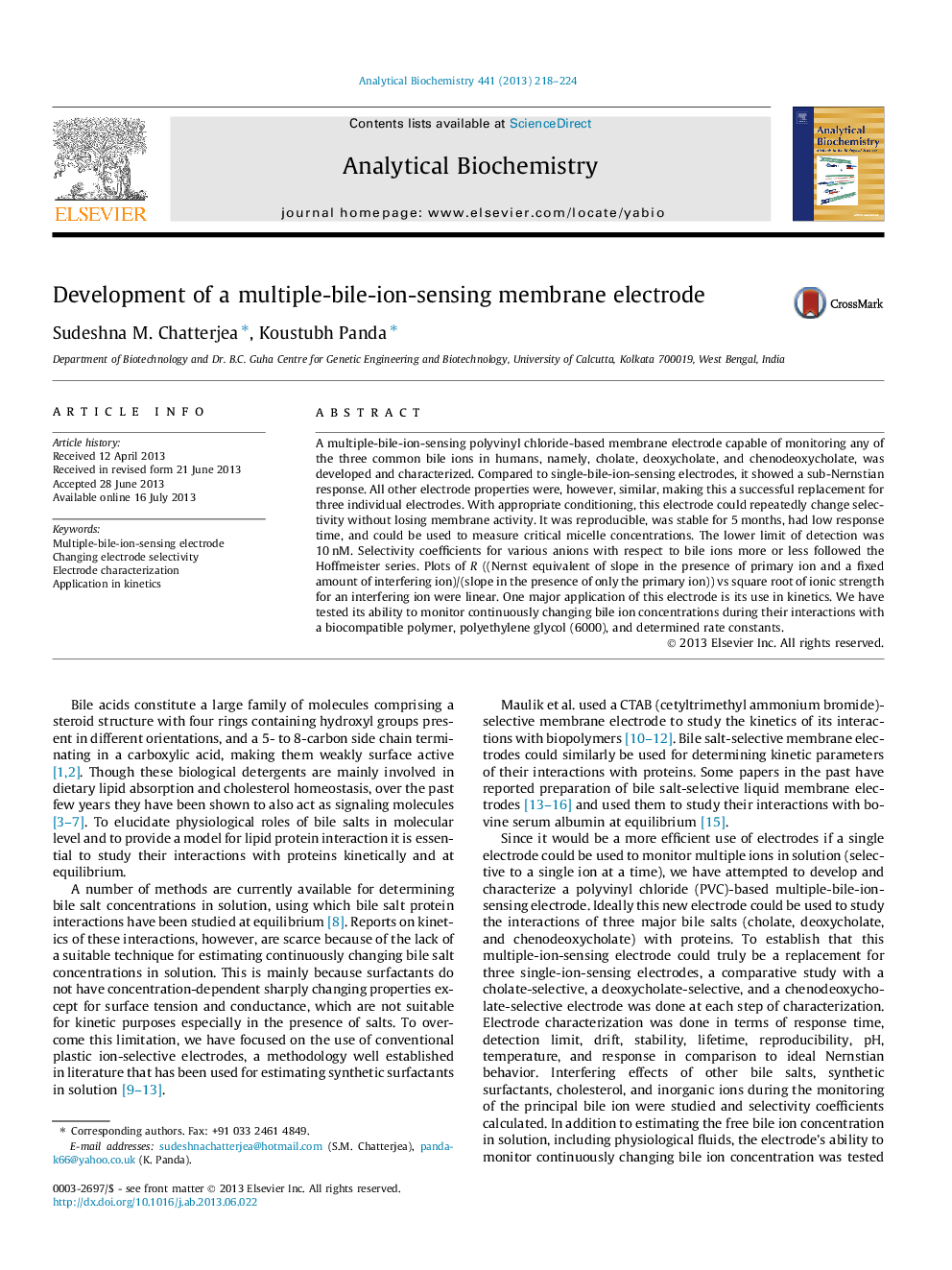| Article ID | Journal | Published Year | Pages | File Type |
|---|---|---|---|---|
| 10532568 | Analytical Biochemistry | 2013 | 7 Pages |
Abstract
A multiple-bile-ion-sensing polyvinyl chloride-based membrane electrode capable of monitoring any of the three common bile ions in humans, namely, cholate, deoxycholate, and chenodeoxycholate, was developed and characterized. Compared to single-bile-ion-sensing electrodes, it showed a sub-Nernstian response. All other electrode properties were, however, similar, making this a successful replacement for three individual electrodes. With appropriate conditioning, this electrode could repeatedly change selectivity without losing membrane activity. It was reproducible, was stable for 5Â months, had low response time, and could be used to measure critical micelle concentrations. The lower limit of detection was 10Â nM. Selectivity coefficients for various anions with respect to bile ions more or less followed the Hoffmeister series. Plots of R ((Nernst equivalent of slope in the presence of primary ion and a fixed amount of interfering ion)/(slope in the presence of only the primary ion)) vs square root of ionic strength for an interfering ion were linear. One major application of this electrode is its use in kinetics. We have tested its ability to monitor continuously changing bile ion concentrations during their interactions with a biocompatible polymer, polyethylene glycol (6000), and determined rate constants.
Keywords
Related Topics
Physical Sciences and Engineering
Chemistry
Analytical Chemistry
Authors
Sudeshna M. Chatterjea, Koustubh Panda,
